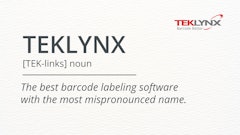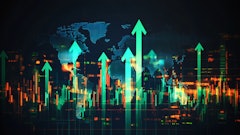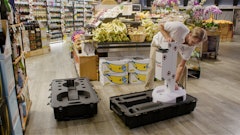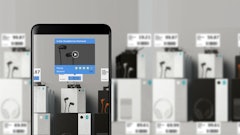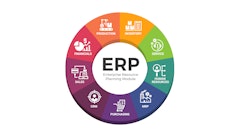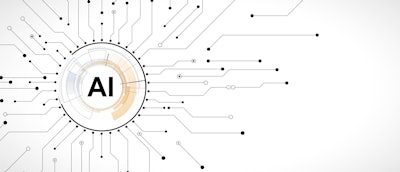
In the food and beverage industry, where consumer preferences shift rapidly and shelf life is limited, accurate demand forecasting is essential.
It’s also notoriously difficult.
Traditional forecasting methods can often fall short when accounting for real-time variables such as seasonal trends, promotions, changing dietary habits and supply chain disruptions. The limitations of manual forecasting risk overproduction, stockouts, food waste and lost revenue. As the industry faces increased pressure to respond swiftly to market demands, artificial intelligence (AI) and machine learning (ML) are emerging as powerful tools to improve demand forecasting.
Limitations of traditional methods
Demand forecasting is knowing what the marketplace needs and predicting demand with enough accuracy to guide supply decisions. If a company can’t meet demand with available supply, it can scale operations, expand capacity or partner with other suppliers to meet demand but only if their forecast is accurate. Traditional demand forecasting relies heavily on historical data and human judgement. As supply chains become more complex, there’s no one simple equation that can predict demand with any real certainty.
Adding to this complexity are increasingly global supply chains, with longer lead times and greater risks if forecasts are inaccurate, including being stuck with unsellable or expired inventory. Additionally, product portfolios are expanding dramatically to cater to broadening consumer preferences. This means forecasting demand for a much wider array of products, each with their own unique specifications, and makes the process more difficult as new products are introduced and older ones are phased out. This level of complexity and change can cause traditional demand forecasting tools and methods are falling short of the mark.
The dangers of inaccurate forecasting
Inaccurate demand forecasting in the food and beverage business, whether demand is over- or underestimated, significantly impacts the bottom line. When a company under-forecasts, it experiences product shortages, leading to lost sales. The company also potentially risks losing “companion sales,” when consumers abandon the purchase of multiple products due to one of them being out of stock. This not only impacts profitability, but also customer loyalty. To recover, companies often resort to a firefighting approach, taking costly actions like transshipping from other locations or disrupting production schedules of other goods to make up for the shortage.
On the flip side, over-forecasting results in excess inventory, which means increased carrying costs and, potentially, the need to implement discounts to clear out unsold stock. Additionally, in the food and beverage industry, stock that exceeds its expiration date must be removed from inventory, which can lead to additional costs for disposal.
Whether through wasted product, lost sales or operational inefficiencies, poor demand forecast accuracy translates directly into higher costs and reduced profitability.
Enter AI and ML
AI and ML have significant potential to transform demand forecasting in the food and beverage supply chain by enhancing accuracy and enabling faster, more dynamic decision making. This doesn’t mean that traditional forecasting methods don’t still play a role. But AI introduces powerful tools such as neural networks and state space models, that can detect complex patterns in historical data that traditional demand forecasting techniques might miss. ML can then also help select the best forecasting models and combine the outputs of different methods to produce better results. ML can also determine the hierarchy of forecast creation. Determining the right hierarchy can require forecasting over a very large number of iterations, which can be very time consuming. This evaluation, which could take months to perform manually, can be handled quickly by ML resulting in faster, more accurate forecast generation.
Managing complex forecast hierarchies is something that is particularly important in the food and beverage sector. Products are often sold in multiple formats, different package sizes and branding for private or store labels, for example. Demand forecasts must account for both granular, SKU-level data and higher-level demand. ML algorithms can quickly evaluate whether it’s more accurate to forecast at a detailed level or at a higher, disaggregated level, something that is time-consuming and difficult to do manually. It can handle complex hierarchies across customers and locations, rapidly testing thousands of combinations to find the most effective forecasting sequence. Adding this level of analysis to the process allows planners to generate a better forecast, respond faster and more accurately to demand shifts. That means less waste, lower costs and improved service levels across the entire supply chain.
Implementing AI and ML in demand forecasting has shown marked real-world results. Compared to baseline stat forecasts, a global beer company showed a 3% overall improvement and a global candy company showed improvement of 5-12% improvement, depending on the region.
Tips for incorporating AI and ML
There are a number of things to keep in mind when incorporating AI and ML into the demand forecasting process.
· Gain a basic understanding. Although users don’t have to be technical experts, they must have a fundamental understanding of how to interpret AI and ML outputs. A high-level grasp of the technology is necessary to make sense of the results and properly integrate them into the decision-making process.
· Balance the role of AI with human forecasters. AI and ML are powerful tools, but they can’t fully capture the unpredictability of the future or respond instantly to real-world information and developments that aren’t already reflected in the data. Humans play a critical role in interpreting AI and ML results and incorporating real-time information — such as breaking supply chain news, geopolitical changes and even weather — into the forecast.
· Don’t fall for the hype. There is a lot of hype surrounding AI and ML, leading some to believe they will replace all traditional methodologies or serve as a magic cure-all solution. A successful approach requires objectively evaluating AI and ML performance, accepting when it doesn’t work and continuing to iterate, while recognizing the value of established forecasting practices.
Whether organizations use vendor software or homegrown solutions, the key is being open to trial and error and iterative improvement, rather than expecting immediate, flawless results.
The future of AI and ML in demand forecasting
AI and ML have demand forecasting potential that goes beyond today’s capabilities. First is the increasing integration of external data sources into forecasting models. Traditional forecasting relies primarily upon a company’s internal data, such as past sales. AI and ML may allow businesses to process far more outside information, from macroeconomic indicators to real-time weather data. This will require more computing power and investment, but even improving forecast accuracy by a few percentage points could make it worth the effort and expense.
Additionally, large language models (LLMs) open the door to incorporating non-numeric data into demand forecasts. These tools could potentially scan news sources to detect disruptions in supply chains and emerging data trends and factor them into forecasts. LLMs could also potentially help translate model outputs into plain language, helping users understand forecast output, making forecasting systems more intuitive and intelligent.
Although AI and machine language aren’t silver bullets, they are powerful tools that are already helping businesses in the food industry and beyond improve forecast accuracy and efficiency. As the technologies continue to grow and improve, AI and ML are certain to become integral to tackling the demand forecasting challenges of food and beverage supply chains that grow more complex every day.









